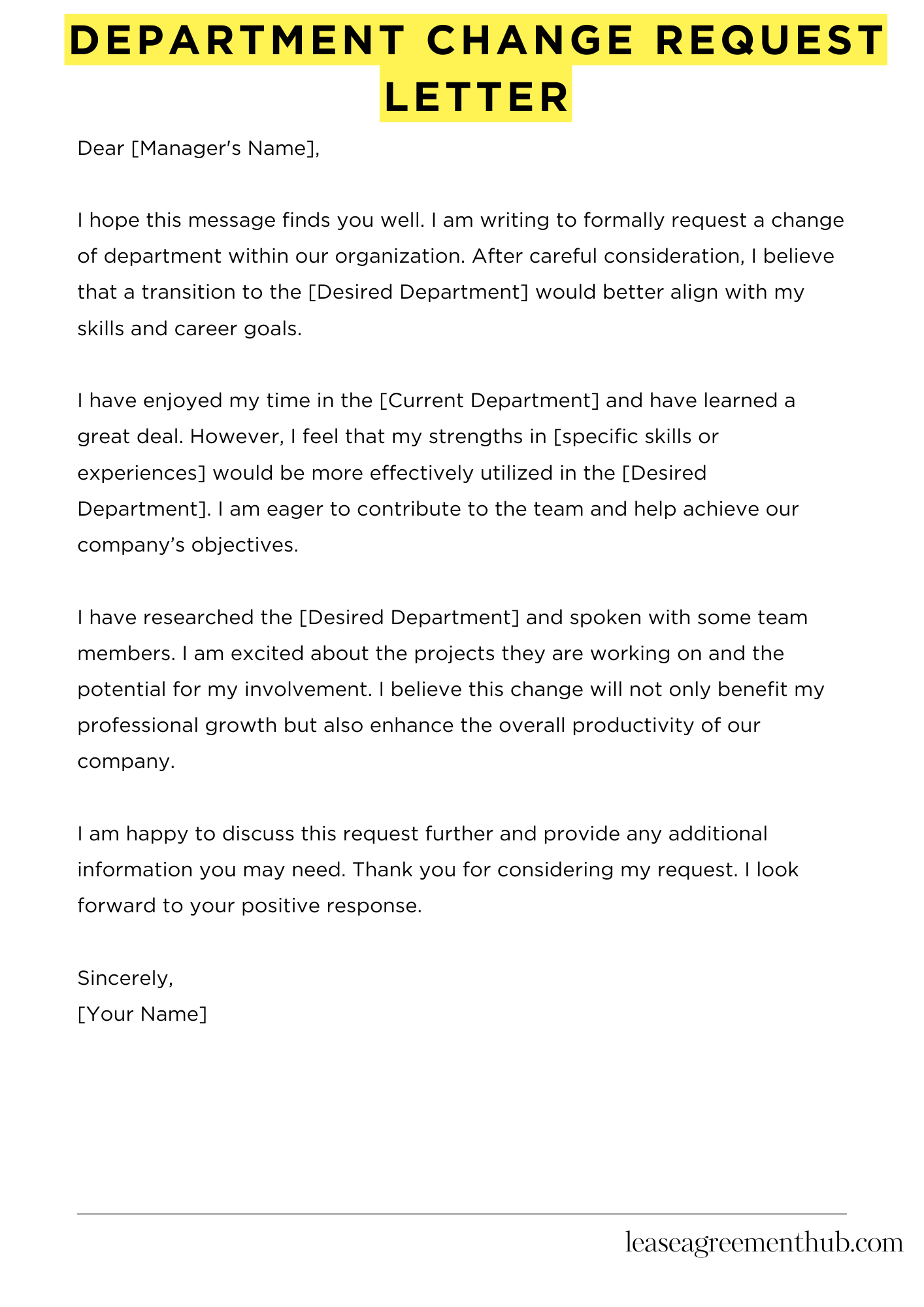A Department Change Request Letter is a formal document that an employee uses to request a transfer from one department to another within the same organization. Its purpose is to communicate the desire for a change in work environment, often to pursue new opportunities, align with career goals, or improve job satisfaction. This letter helps to ensure that the request is documented and considered by management.
In this article, we will provide various templates and examples of Department Change Request Letters. These samples are designed to help you craft your own letter easily and effectively. Whether you are looking for a simple format or a more detailed approach, we have you covered.
By using these templates, you can save time and reduce stress when making your request. Writing a clear and professional letter can make a positive impression on your supervisors. We aim to make this process as straightforward as possible for you.
Department Change Request Letter
[Your Name]
[Your Address]
[City, State, Zip Code]
[Email Address]
[Phone Number]
[Date]
[Manager’s Name]
[Company Name]
[Company Address]
[City, State, Zip Code]
Dear [Manager’s Name],
I hope this message finds you well. I am writing to formally request a change of department within our organization. After careful consideration, I believe that a transition to the [Desired Department] would better align with my skills and career goals.
I have enjoyed my time in the [Current Department] and have learned a great deal. However, I feel that my strengths in [specific skills or experiences] would be more effectively utilized in the [Desired Department]. I am eager to contribute to the team and help achieve our company’s objectives.
I have researched the [Desired Department] and spoken with some team members. I am excited about the projects they are working on and the potential for my involvement. I believe this change will not only benefit my professional growth but also enhance the overall productivity of our company.
I am happy to discuss this request further and provide any additional information you may need. Thank you for considering my request. I look forward to your positive response.
Sincerely,
[Your Name]

How to Write Department Change Request Letter
Understanding the Purpose
A Department Change Request Letter is a formal document used to propose changes within an organization. These changes can involve restructuring teams, altering job roles, or even shifting responsibilities. Writing this letter clearly communicates your intentions and helps facilitate the process. It is crucial to convey your message effectively to ensure that your request is taken seriously.
Gathering Necessary Information
Before you start writing, collect all relevant information. Identify the specific changes you want to propose. Consider the reasons behind these changes. Are they due to inefficiencies, employee feedback, or changes in company goals? Documenting these details will provide a solid foundation for your letter. Additionally, gather any supporting data or examples that can strengthen your case.
Structuring Your Letter
A well-structured letter is key to making your request clear. Start with a formal greeting. Address the letter to the appropriate person, such as your manager or the HR department. In the introduction, state the purpose of your letter clearly. Then, outline the proposed changes in detail. Explain why these changes are necessary and how they will benefit the department and the organization as a whole.
Using Clear and Professional Language
When writing your letter, use clear and professional language. Avoid jargon or overly complex terms that may confuse the reader. Be concise and to the point. Use short sentences to convey your ideas clearly. However, do not hesitate to include longer sentences when explaining more complex points. This balance will make your letter engaging and easy to understand.
Reviewing and Sending Your Letter
After writing your letter, take the time to review it. Check for any grammatical errors and ensure that your message is clear. It may help to read it aloud or have someone else review it for you. Once you are satisfied with the content, send the letter through the appropriate channels. Follow up if necessary, but be patient as the decision-making process may take time.
Related: